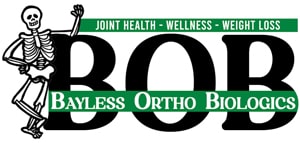Healthcare News
5 Signs of a Thumb Sprain
A sprained thumb is an injury to a ligament, which is a soft tissue that connects bones to each other at the joints to keep it stable, as opposed to a thumb fracture (break) which is an injury to the bone. The ulnar collateral ligament is the most injured ligament in the thumb. This particular ligament connects the thumb to the hand on the side closest to your index finger.
Don’t let shoulder pain sideline your summer
Shoulders are among the most frequently injured joints in the body, with the main culprit stemming from the rotator cuff, the part of the shoulder that allows you to lift and rotate your arms. Over 3 million Americans each year are affected by rotator cuff problems.
Knee Pain and Function: Nonoperative Approaches to Managing Patellofemoral Pain Syndrome
Physical rehabilitation and osteopathic manipulative techniques can treat different aspects of “runner’s knee,” to alleviate tight muscles and tender points within the joint or muscle and increase range of motion.
Yoga Moves to Improve Hip Health
Protect yourself from pain and disability with simple exercises you can do at home
Why Triathletes Should Swim Different Strokes
Shoulder health is a big deal for swimmers and triathletes. Overuse injuries due to muscular imbalances are common, painful, keep you from training, and can be expensive to treat. Swimming other strokes gives you an opportunity to strengthen other parts of the shoulder by using different movements
An individualized approach to improve surgical outcomes after shoulder dislocation
A dislocated shoulder is a common sports injury that can occur with a single swing of the tennis racket or an awkward fall on the field. Though popping the bone back into the socket may seem like a simple solution, the reality is more complex.
What can cause pain in the back of the knee when straightening the leg?
When a person experiences pain in the back of their knee when straightening their leg, it is called posterior knee pain. Pain in the back of the knee, called the popliteal fossa, is common, but there is a wide range of causes, ranging from ligament injury to arthritis.
Athletes: What to Do When You Get Hurt
Whether you’re a weekend warrior, competitive athlete, regular recreational exerciser or simply an active individual, you know a nagging tendonitis or skin infection can halt you in your tracks. Instead of toughing it out, a sports medicine physician can get you back to an active lifestyle.
Tennis Elbow Surgery: Everything You Need to Know
A lateral epicondylitis release is a surgery commonly used to treat tennis elbow (lateral epicondylitis). It is used when conservative treatments fail to resolve the pain and loss of grip strength caused by this overuse injury. By cutting the damaged tendon at the point where it attaches to the bone, called the lateral epicondyle, the tension in the elbow can be relieved along with accompanying symptoms.
Acromioplasty: Not a one-size-fits-all procedure
Surgeons have performed acromioplasty to reduce pain and prevent rotator cuff disease progression since the 1970s. However, in the past decade, a number of randomized trials have brought the appropriate use of acromioplasty into question.









